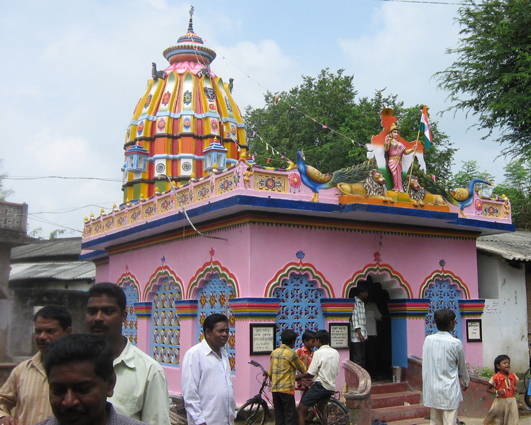Sambalpur: A symbol of religious sanity, secularism, ideals, ahimsa (non-violence) and truth, the Gandhi Mandir here with Mahatma Gandhi as the presiding deity is one of its kind.
While Bapu presides as the deity in the temple, the priest is a Dalit. The worshippers are from all religions, creeds and castes.
Situated at Bhatra, a Harijan suburb in Sambalpur, the temple has a 3.5-foot-tall bronze ‘idol’ of the Father of the Nation in a squatting position inside the sanctum sanctorum. The entrance of the temple is guarded by Ashoka Stambha (National Emblem), symbolic of peace and goodwill.
Instead of religious sermons, teachings and writings of Gandhiji are read out to the congregation every day.
The temple was built by Abhimanyu Kumar, a victim of untouchability who decided to build the temple in memory of the ‘Bapu – the man who abolished the untouchability’, when he was elected MLA in 1971. It was inaugurated in 1974 by the then Chief Minister, Nandini Satpathy.
Apart from daily rituals, the temple committee organises health camps and cleanliness drives.
“The temple preaches equality and tolerance, which is of paramount importance in contemporary times when different faiths are at loggerheads,” says Richard Chen, a Christian of Chinese origin who has made Sambalpur his home.
“I have visited the temple on several occasions. Every time I go there I experience a thrill while looking at Gandhiji’s statue. It is genuinely a centre of peace and communal harmony,” says Kadir, a resident of Sambalpur.
While many have raised their voice over installing the statue of a statesman in a temple, others have supported the act.
“In a star-struck nation, which is so easily guided by emotions, if we can have temples dedicated to living film stars, why can’t we have one for an apostle of peace like Mahatama Gandhi, who showed us the correct path of establishing an inclusive society. What’s wrong with it?” asks a social worker.
PNN
